The third performance cycle for COMs is coming
Article By : Congatec
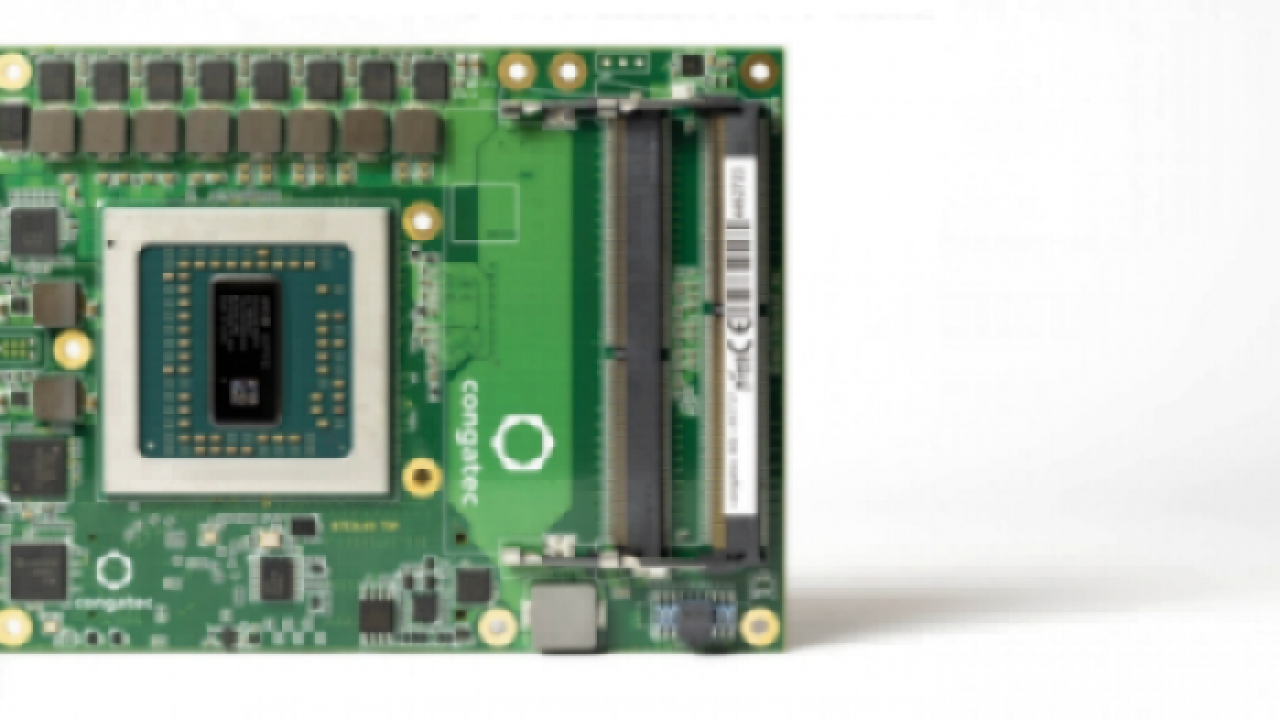
The Computer-on-Module industry is about to launch a new product lifecycle that will create a new performance class after ETX/XTX and COM Express
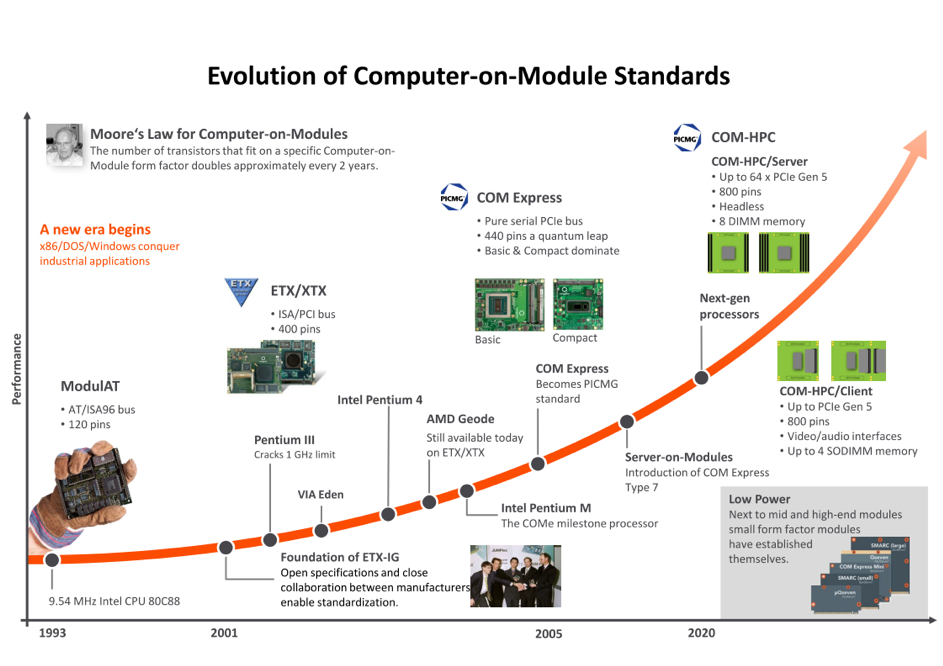
The Computer-on-Module industry is about to launch a new product lifecycle that will create a new performance class after ETX/XTX and COM Express. Called COM-HPC, the new form factor standard is currently primed for PICMG certification by companies such as congatec. Ultra-fast real-time data exchange will be a major application field due to 5G network rollout.
Computer-on-Modules (COMs) have established themselves as the most important design principle for embedded computer systems over the many years that the COM concept has existed. Studies such as those by IHS Markit predict that COMs will account for around 38% of the total sales of embedded computing boards, modules, and systems by 2020. With ModulAT based on the then common AT/ISA96 bus the first modules appeared in the early 1990s. The aim was to make office PC technology suitable for industrial use.
The goal of these first modules was to avoid putting all functions on one card in order to cushion the fast CPU innovation cycles. Back then, Intel and AMD launched new CPUs every six months. Ultimately, customers always want the latest CPU – that was true then just as much as it is today.
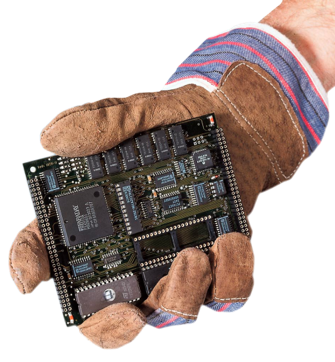
With the new ISA and PCI buses, a new module standard made its entry. The ETX standard for modules with 400 pin connectors to the carrier board. JUMPtec and Advantech joined forces in November 2001 to found the ETX Industrial Group (ETX-IG), which introduced the first open, manufacturer-independent module standard and maintained a version that is still valid today.
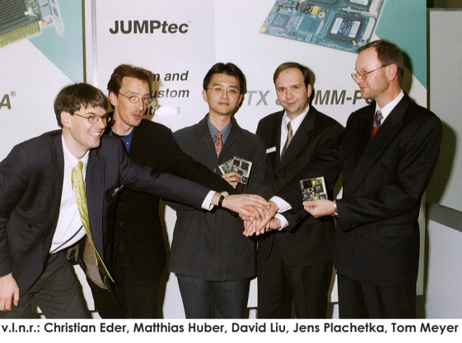
COM Express modules are unrivalled
The widespread introduction of the new PCI Express bus and the elimination of ISA support in the new processors and chipsets required a new concept: COM Express. The embedded community agreed on the COM Express standard within the PICMG in July 2005. From Rev 2.0 in 2010 up to the current Rev 3.0 from 2017, the specification was developed under the continuous leadership of draft editor Christian Eder.

The third generation of high-performance COMs is coming
Since October 2018, the PICMG working group has been working under the chairmanship of congatec’s Christian Eder on the new COM-HPC module specification. And again, as with the switch from ETX to COM Express, the introduction of new bus technologies is leading to a new standard. The aim of the COM-HPC specification is to create a new Computer-on-Module standard for broadband computing over broadband Internet that is suitable for the new high-frequency signals from PCI Express Gen 3 to 5.. And especially these new signals make the design-in process of new processors much more complex, which is why it makes even more sense today to decouple the I/Os from the processor module via an application-specific carrier board.
Although the new standard targets applications with requirements well above the current top COM Express performance class, the overall aim is to offer OEMs the benefits of the large ecosystem and reputation of the PICMG and its standards, which is why there is an emphasis on making migration as easy as possible for customers.
For these reasons, there will be two new next-gen performance classes above the COM Express specifications Type 7 and Type 6. One is aimed at edge server technology, which requires more communication interfaces instead of integrated, powerful graphics, and will bring an extremely large number of cores for workload consolidation. The other expands the existing high-end embedded computing with new performance options that COM Express can no longer cover, which also comprises graphics. The list includes USB 3.2 with 20 Gbit/s, USB 4.0 with 40 Gbit/s, PCIe Gen4/5 with x2/x4 port configuration and re-timer, 100/200 Gbit/s Ethernet, NVMe, and much more.
Twice as many pins and up to 8 DIMM sockets
An essential part of the new specification is the connector. COM Express, for instance, is limited to PCIe Gen 3.0 with 5.0 GHz clock rate and 8 Gbit/s. The new connector supports transfer rates of more than 32 Gbit/s, which is adequate at least up to PCIe Gen 5.0. In addition, there are now up to 64 PCIe lanes to the carrier board – enough to connect many powerful GPGPUs for machine learning, for example. COM Express, by comparison, supports a maximum of 32 lanes. The Ethernet performance will also increase to at least 25 Gb Ethernet per signal pair, enabling support for up to 100 Gb Ethernet. The new processor generations for edge computing also require more interconnects than before, as well as more space for DIMM sockets than previously possible. Current plans allow for up to 8 DIMM sockets and 800 pins to the carrier board; COM Express has only 440 pins.

When will COM-HPC modules be available?
Developing a new standard is no easy matter, even if some might think so. The complexities arising just from increasing the signal frequency are already enormous. To give an example: congatec and Samtec have been working together for a full 2 years on COM-HPC connector requirements and tests to be able to support modules up to 300W. The development departments are already working at full speed on first design studies based on the latest processor technology, which semiconductor manufacturers such as Intel are sharing via early access programs. The first production-ready COM-HPC modules from congatec will probably become available in early 2020, when the next major embedded computing generations are expected to launch.
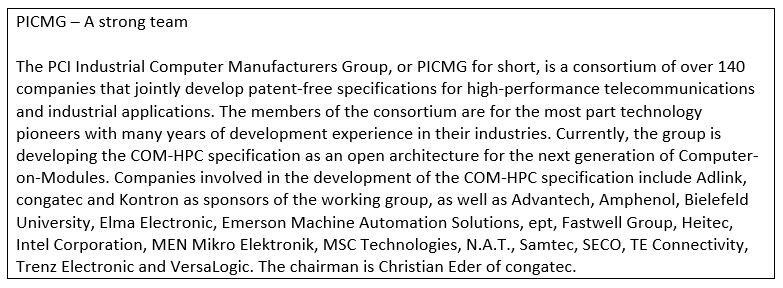
http://embeddedtechtrends.com/2017/PDF_Presentations/M06%20-%20IHS%20Markit.pdf
Subscribe to Newsletter
Test Qr code text s ss


